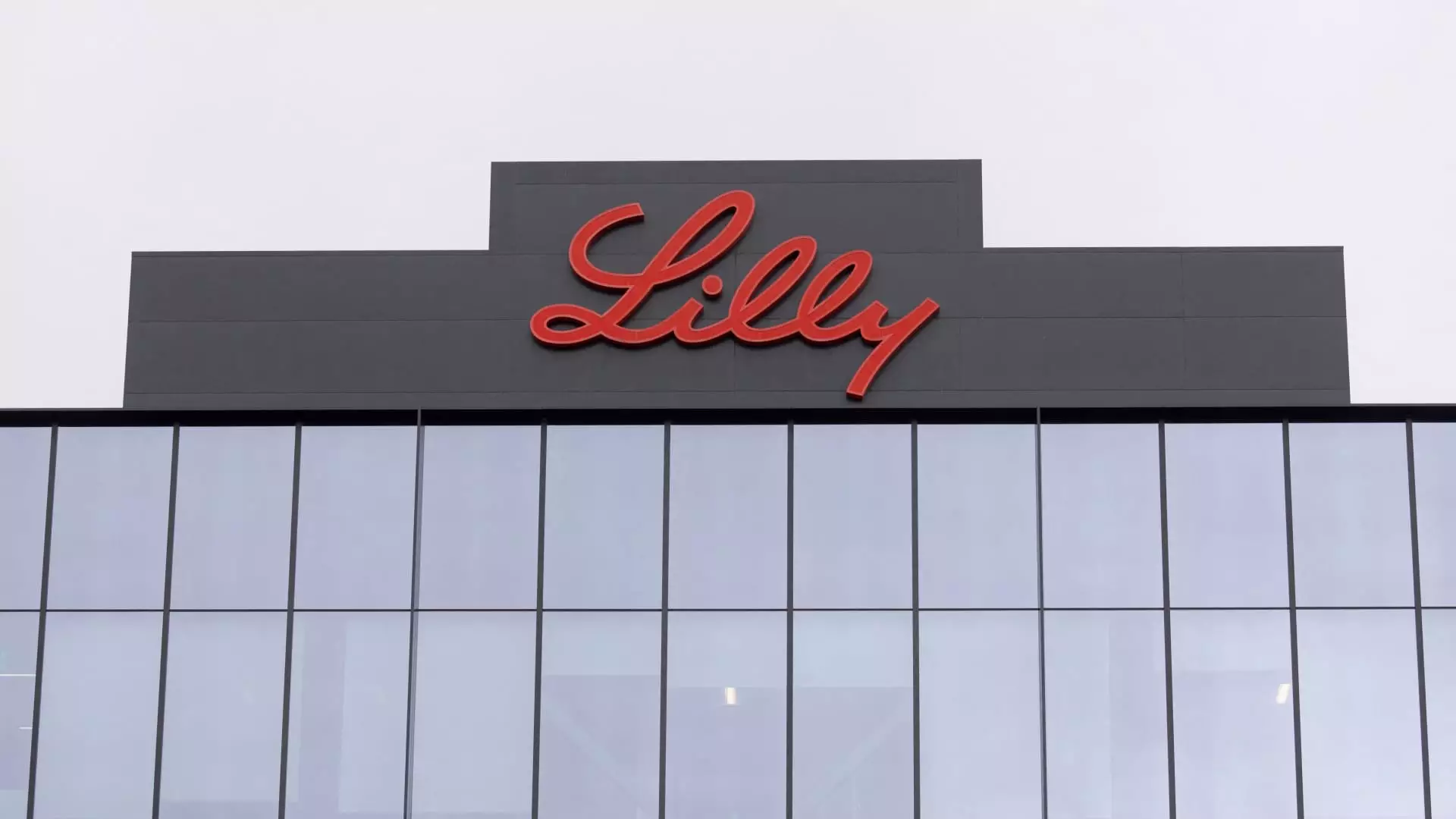Eli Lilly & Co. finds itself under scrutiny in the wake of its disappointing third-quarter results, which fell short of profit and revenue projections. The company’s challenges provide a compelling case for analysis, especially considering the broader impact on the pharmaceutical market. Notably, this performance revealed not just internal factors but also how competitive pressures and demand fluctuations have shaped outcomes.
In a recent announcement, Eli Lilly reported adjusted earnings of $1.18 per share, significantly below the Wall Street expectation of $1.47. This marked a stark contrast in performance, highlighting potential inefficiencies or misjudgments in sales forecasting and inventory management. The company’s revenue of $11.44 billion was also short of analysts’ predictions, underscoring a pattern of underachievement. Investors reacted strongly, resulting in a dramatic drop in stock price of over 12% following the announcement.
A noteworthy factor contributing to this underperformance was a staggering $2.8 billion charge linked to the acquisition of Morphic Holding, a company specializing in bowel disease treatments. This type of significant one-time expense raises questions about Eli Lilly’s strategic direction and its capacity to manage growth effectively. Such a funding allocation may indicate a misalignment of resources or an overestimation of projected synergies from acquisitions.
The inability of Eli Lilly’s flagship products, Zepbound and Mounjaro, to meet sales expectations has further complicated the financial landscape. Zepbound, the weight loss drug that had been highly anticipated, raked in $1.26 billion during its third quarter—this figure fell short of the expected $1.76 billion. On the other hand, Mounjaro, a diabetes treatment, reported $3.11 billion in sales, significantly ahead of the previous year but still disappointing given analyst expectations of $3.77 billion.
These shortfalls can be partly attributed to an ongoing dilemma in the supply chain. Despite a recent alleviation in shortages—as confirmed by the Food and Drug Administration (FDA)—the demand for these incretin drugs has historically outpaced supply, leading to significant frustration among patients and ultimately hampering sales. Eli Lilly’s CEO, David Ricks, attributed the third-quarter sales dips to low inventory levels among wholesalers rather than a lack of supply overall. This distinction highlights a potentially critical oversight in distribution strategy that may have alienated customers during a crucial marketing phase.
The company’s decision to delay advertising and marketing campaigns for Zepbound due to earlier supply issues reflects cautious management but also raises questions about the robustness of its market strategies. The choice to put promotional activities on hold in response to customer service challenges may have directly affected sales momentum. As Ricks himself noted, the last thing the company sought was to direct more frustrated customers towards a product they couldn’t readily obtain. This operational approach suggests an underlying tension between marketing aspirations and supply chain realities.
Despite these roadblocks, there is a glimmer of hope as Eli Lilly has projected that the second half of 2024 will see a 50% increase in production capacity for its incretin drugs compared to the same period in 2023. This ambitious goal aims to address some of the operational hitches that have plagued the company. However, whether this increase will suffice in rectifying the current financial downturn remains to be seen.
Moreover, Eli Lilly’s challenges have coincided with external competitive pressures. Rival drugmaker Novo Nordisk, while also experiencing a slight decline in its stock of over 3%, remains a formidable competitor in the weight loss and diabetes treatment markets. The competition between these two pharmaceutical giants underscores a larger narrative about market saturation and the volatility of drug sales.
Eli Lilly’s operational struggles also reflect broader industry issues, including resistance from compounding pharmacies against the FDA’s decision to remove tirzepatide, the active ingredient in both Zepbound and Mounjaro, from its shortage list. The emergence of cheaper alternatives produced by these pharmacies could put additional pressure on Eli Lilly’s revenue generation, posing a significant risk to its market share.
Eli Lilly’s third-quarter results reveal a plethora of challenges— from disappointing financial metrics and supply issues to strategic delays and fierce competition. At this juncture, it is critical for the company to recalibrate its approaches in overcoming operational obstacles while fostering a resilient market strategy. The coming quarters will be pivotal for Eli Lilly as it navigates recovery paths while addressing stakeholder apprehensions and market dynamics.

